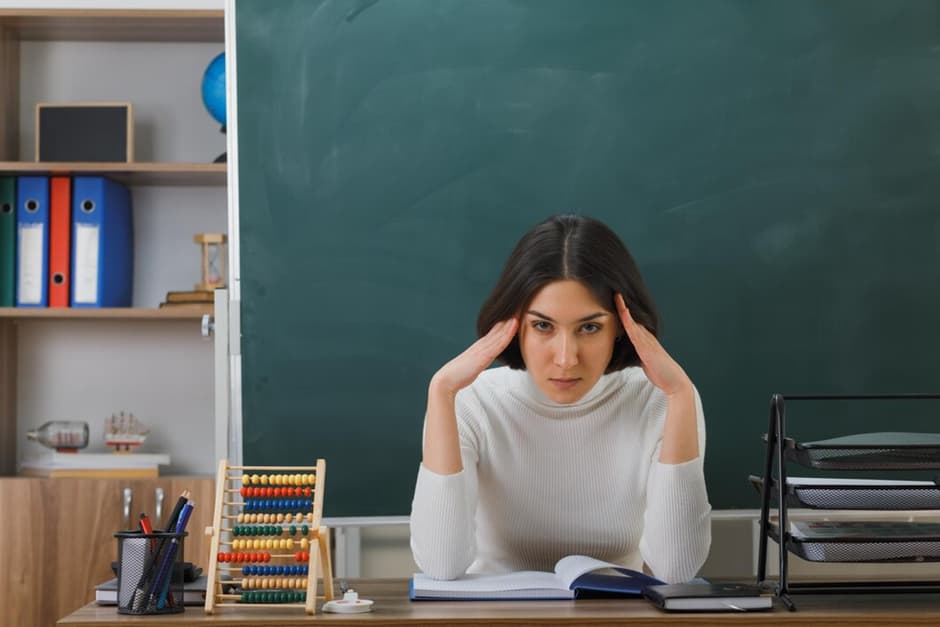Teacher burnout, a state of chronic exhaustion due to prolonged stress, is an issue that affects not only teachers themselves but also the students they instruct. Burnout occurs when teachers face overwhelming demands, limited resources, and lack of support, leading to symptoms such as fatigue, detachment, and reduced performance. This emotional strain has consequences for the classroom environment, impacting both the academic and emotional development of students. Recognising and addressing these effects is crucial to fostering a positive learning environment for both teachers and students.
Understanding Teacher Burnout and Its Causes
Teacher burnout is often the result of high workloads, administrative pressure, and the challenging demands of meeting every student’s needs. Teachers are expected to provide academic, social, and emotional support, which can become overwhelming without sufficient resources. Common signs of burnout include reduced enthusiasm, emotional exhaustion, and difficulty concentrating. When teachers face these pressures alone, their ability to deliver quality instruction and engage with students diminishes.
An additional contributing factor is the lack of adequate work-life balance. Many teachers bring their work home, continuing to plan and grade long after school hours. This ongoing stress builds over time, leading to burnout that not only affects teachers’ personal well-being but also impacts the classroom experience for students.
The Impact of Teacher Burnout on Students’ Academic Development
Teacher burnout has direct implications for students’ academic progress. A burnt-out teacher often struggles with concentration, memory, and motivation, which affects their ability to provide effective instruction. Burnout can reduce the teacher’s energy and engagement, leading to fewer opportunities for dynamic, interactive learning. Students may become less motivated if they sense their teacher’s fatigue or detachment, and the overall learning environment can suffer.
One specific area affected by burnout is the quality of feedback provided to students. Effective teaching includes giving tailored feedback to help students understand their strengths and areas for improvement. Burnt-out teachers may not have the energy to deliver personalised guidance, instead resorting to general comments that offer little direction. This lack of individualised feedback can leave students unsure of their progress and less engaged in their studies.
Interestingly, the effects of burnout on engagement are not exclusive to educational environments. In interactive settings such as live gaming, for instance, energy and enthusiasm are crucial for maintaining participant interest, as seen in experiences like Real Roulette. Just as a teacher’s approach can impact student engagement, a lack of enthusiasm can affect the immersive experience in other live settings, underscoring the value of energy and focus.
The Effects of Teacher Burnout on Students’ Emotional Development

The impact of teacher burnout goes beyond academics; it also influences students’ emotional well-being. Teachers are often role models, and their behaviour and attitude can shape students’ emotional responses. A burnt-out teacher may unintentionally convey stress or irritability, creating a tense classroom atmosphere that affects students’ comfort levels. This can increase students’ anxiety and reduce their resilience in handling academic and personal challenges.
Students benefit emotionally from teachers who offer understanding and empathy, especially when they face difficulties. However, a teacher experiencing burnout may struggle to provide emotional support, making it harder to create a nurturing environment. As a result, students may feel isolated or undervalued, impacting their self-esteem and overall emotional growth.
Additionally, teacher burnout can contribute to increased disciplinary issues. Burnt-out teachers may have less patience and a reduced ability to manage misbehaviour constructively. This can create a cycle where students feel they are treated unfairly, leading to further misbehaviour and a strained classroom atmosphere. Such a negative environment can erode trust and respect, essential components of a supportive learning environment.
Moreover, burnout can affect students’ social interactions. In a classroom with a stressed teacher, students may feel less inclined to participate in group activities, impacting their ability to develop collaborative skills. These experiences are crucial for building friendships and teamwork skills, both of which are vital for personal and academic growth.
Strategies to Support Teacher Well-being
Supporting teachers’ mental health and well-being is essential for creating a productive learning environment. School administrators can play a significant role by offering mental health resources, reducing excessive administrative tasks, and fostering open communication channels where teachers feel comfortable sharing their concerns. Additionally, professional development programmes that focus on stress management and emotional resilience can empower teachers with practical tools for handling their roles more effectively.
Community support is also vital in combating teacher burnout. Parents and guardians can show appreciation for teachers’ efforts, helping to foster a culture of respect that reinforces the importance of teachers’ roles. Encouraging students to view teachers as individuals deserving of respect can improve classroom dynamics, leading to a more compassionate and understanding environment.
Wellness initiatives can also play a crucial role in reducing burnout. Offering relaxation breaks, mindfulness sessions, and stress-relief workshops allows teachers to recharge, preventing burnout from escalating. Creating a healthier work-life balance for teachers benefits not only their own well-being but also positively impacts students who rely on their instructors’ support.
For those interested in diverse approaches to stress management, the online platform https://playfortune.net.br/cassino/play-fortuna/ provides a variety of resources and information that can be explored. While the platform’s primary focus is entertainment, it highlights interesting ways people balance high-stakes environments, which can be insightful for understanding different stress-relief approaches.
In conclusion, teacher burnout has far-reaching effects on students’ academic achievements and emotional growth. By acknowledging and addressing these impacts, schools and communities can work to support teachers, fostering a healthier environment where both educators and students can thrive. Supporting teacher well-being is key to building a foundation of academic success and emotional resilience that benefits everyone involved.




